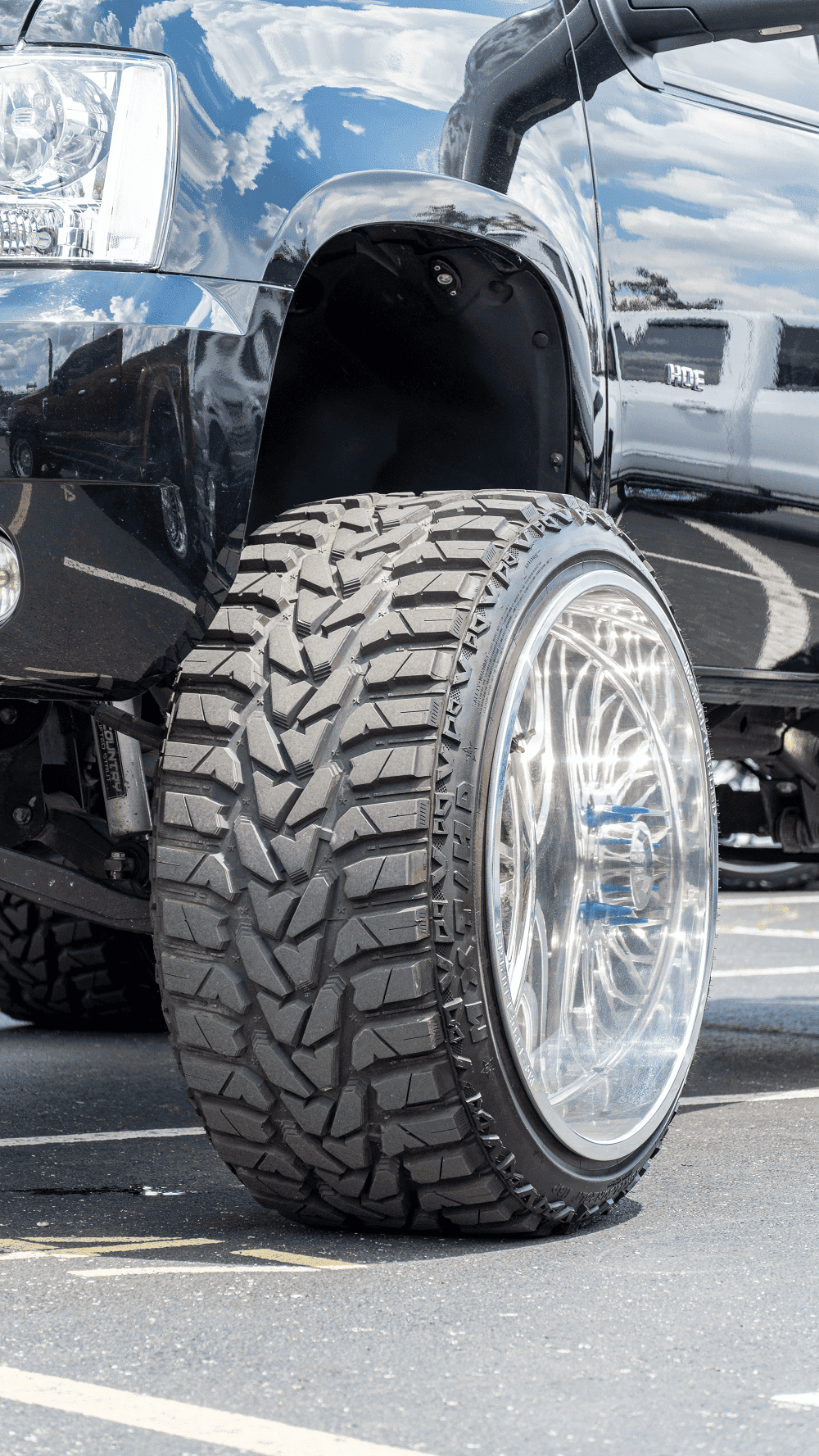
All-wheel-drives are absolute beasts. They pack twice the tire power as front-wheel-drive (FWD) and rear-wheel-drive (RWD) cars. And for this reason, most drivers think they don’t really need snow tires.
It’s a common myth that the tire power of a vehicle is the sole determinant of its performance in challenging terrains. While it does play a significant role, it’s crucial to remember that tires are the points of contact with the ground, enabling you to maintain control in any driving situation.
Previously, tires were simply composed of rubber constituents designed for driving. However with advancements in science and technology, safety standards were improved. The experts designed more types of tires well-suited for individual terrains. These specific tires perform exceptionally well in the terrain they’re meant for.
In this guide, we’ll show you why AWD on snow needs dedicated winter tires.
There’s a common misconception that AWD and 4WD are the same thing. But they are not. They operate differently and have distinct characteristics, especially in winter driving conditions.
AWD systems are typically found in passenger cars and crossover SUVs. They are designed to operate continuously, and they distribute power to all four wheels as needed based on road conditions. AWD systems are more suited to everyday driving scenarios and provide better handling and stability on slippery roads compared to traditional FWD or RWD systems.
On the other hand, 4WD systems are commonly found in trucks and off-road vehicles. Unlike AWD, which continuously adjusts power delivery, 4WD systems typically have a selectable mode that drivers engage when needed, such as when traversing challenging terrain or driving in deep snow. While 4WD provides excellent traction in off-road situations, it may not offer the same level of performance on icy roads as AWD systems.
One of the most common misconceptions about winter driving is that AWD on snow or 4WD systems on snow alone are sufficient for tackling the icy terrain. However, the reality is that tires play a critical role in providing traction and control, regardless of the vehicle’s drive system.
Winter tires are specifically designed to perform in cold temperatures, snow, and ice. They feature unique rubber compounds that remain flexible in freezing conditions, as well as unique tread patterns that bite into snow and ice for improved grip. Even the most advanced all wheel drive or 4WD system in snow alone cannot compensate for the lack of proper tires in winter conditions.
AWD systems are often praised for their adaptability to various road conditions, including snow and ice. However, it’s essential to understand that AWD systems are not entirely ideal and have limitations as well. While AWD systems excel in distributing power to all four wheels, they rely on the traction provided by the tires to maintain control. In extreme winter conditions, such as deep snow or icy roads, even AWD systems can struggle to provide adequate traction.
To understand the importance of winter tires for AWD vehicles, it’s helpful to compare the performance of AWD vehicles with and without winter tires. AWD vehicles equipped with winter tires demonstrate significantly better traction, handling, and braking performance on snow and ice compared to those with all-season tires or worn-out tires. Without winter tires, AWD vehicles may experience reduced grip, longer stopping distances, and less precise handling in winter conditions. This can increase the risk of accidents and loss of control, especially when driving at higher speeds or on steep inclines.
Here, you may ask yourself to get all-season tires rather than dedicated winter tires. Think again because safety is on the line. All-season tires can be a good investment, but for extreme winters, dedicated winter tires are the only options that ensure safety. Following are some of the points that put winter tires above all-season tires for driving on icy roads.
Winter tires are only recommended for use in winter. That goes without saying for summer tires as well. If you want your winter tires to last longer, install them before the onset of cold weather and hazardous driving conditions. Waiting until snow and ice have already arrived could put you at risk on the road, as tire shops may be busy or supplies limited.
Moreover, when you’re swapping tires, ensure proper storage for off-season tires to maintain their integrity. Store them in a cool, dry place away from direct sunlight, ideally on tire racks or elevated surfaces to prevent flat-spotting. It’s also advisable to read the tire manuals for proper instructions regarding tire shelf life and storage.
Lastly, it’s better to schedule tire installation and maintenance in advance to avoid last-minute rushes and ensure your vehicle is prepared for winter driving conditions.
In conclusion, while all-wheel-drive (AWD) vehicles offer enhanced traction and stability, they are not immune to the challenges of winter driving. Despite common misconceptions, AWD alone is not sufficient to ensure safe travel on snow and ice-covered roads.
Winter tires are crucial for maximizing the performance and safety of AWD vehicles in winter conditions. By understanding the limitations of AWD systems and the advantages of winter tires, drivers can make informed decisions to protect themselves and others on the road during the winter months.